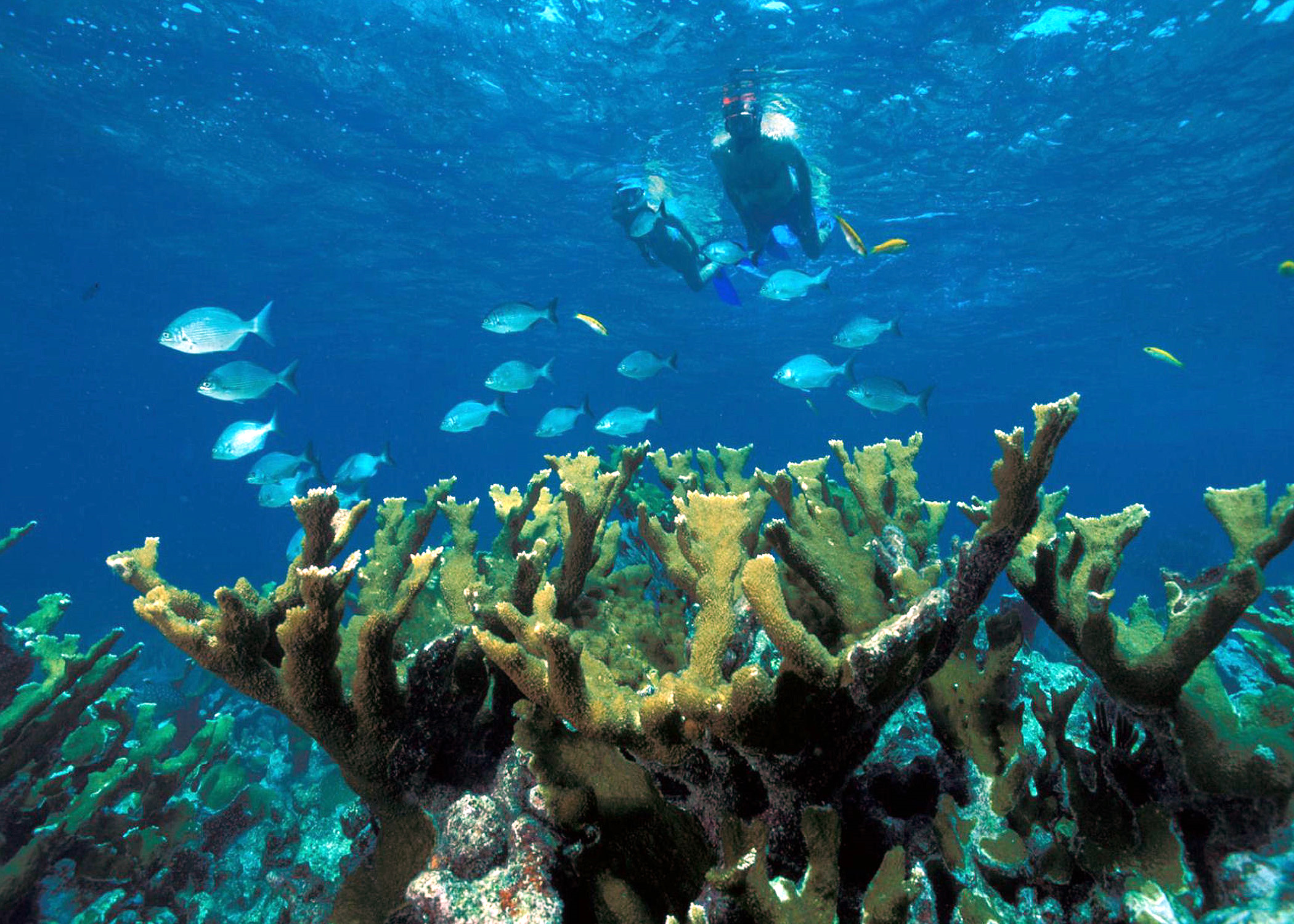Kauai’s Coral Reefs

Under the clear blue sea, bustling communities of ocean creatures live together in brightly colored, wildly stacked structures called coral reefs. These silent underwater cities are home to 4,000 different species of fish and thousands of plants and animals.
Although its often mistaken for rock because of its stony texture, coral is actually made up of tiny clear animals called coral polyps. Millions stick together in colonies and form a hard outer shell. The colonies eventually grow together, creating large reefs. When coral die, their skeletons are left behind, and new coral build on top. It can take hundreds of years for coral to form the structures which are visible today.
Corals are in danger. More than a quarter of the world’s reefs have already been destroyed by pollution and careless human behavior. Destruction of the coral reefs (some of which are 2½ million years old) have a very serious impact on our oceans. Though coral reefs take up less than 1% of the ocean floor, the are home to 25% of all underwater species. Wiping them out would put thousands of creatures at risk of extinction.
Corals may look and feel tough, but the are actual quite fragile. Simply touching corals to see what they feel like can cause the death of an entire colony. Oils from your skin can disturb the delicate mucous membranes which protect the animals from disease. If feeding coral is startled, it retracts for protection and in doing so is unable to feed.
Never walk upon or stand on coral, as this can kill the living coral polyps that are the builders of the reef structure. Take care to see that, particularly if wearing fins, you do not kick or disturb coral as you swim past it. Never stand on coral to adjust mask. Swim well and clear of the reef and search for a sandy or coral free shallow place to stand. This advice is both for the protection of the coral and for your own safety— Coral is very sharp, and can easily cut or scrape your skin if you bump into it while snorkeling, and the wounds are slow to heal.
Snorkeling Tips:
- Don’t use your arms or kick your feet much or you will scare away the fish. Use gentle fin motion and float peacefully in the water. The fish will then swim up to you or past you.
- Snorkeling is usually best in the late mornings. The fish are out and about, and the sun shines into the water, making visibility better.
- Tropical gloves that allow you to grab rocks, and reef/water shoes will protect you from sharp rocks will make entering & exiting the water (as well as snorkeling) easier.
- If you choose to feed the fish (using bread, chips or rabbit food), please make sure you don’t leave your baggie/container in the water. Plastic bags are a threat to sea turtles and fish alike.
- Do not snorkel alone. Always snorkel with a buddy so that you have someone nearby to help if you encounter any trouble.
- Always pay attention to currents in the ocean that may carry you away from the beach as you snorkel. Be alert.
- If caught in a rip current, try to relax. Do not try to swim against the current as this is very difficult, even for an experienced swimmer. If you can do so, tread water and float. Call or wave for assistance. Swim parallel or at an angle to shore until you are out of the current, then swim directly toward shore.
See the section on Hazards in the Sea for a few things you should watch out for while snorkeling.